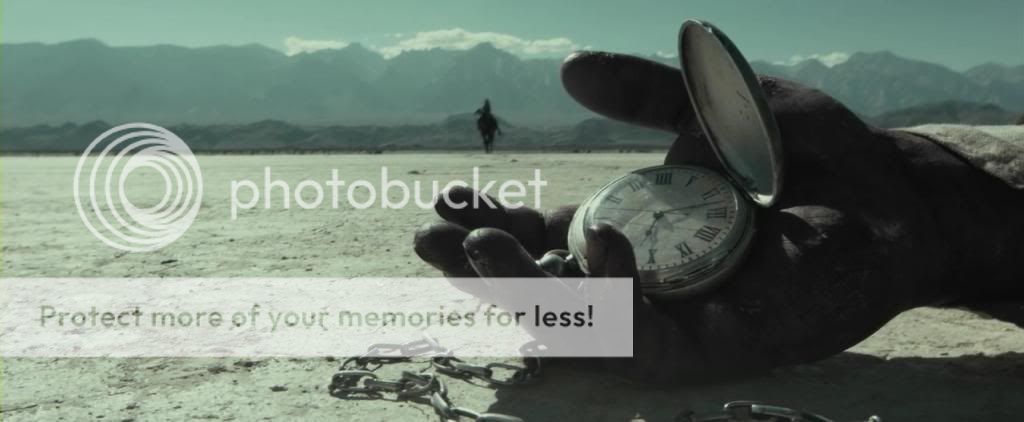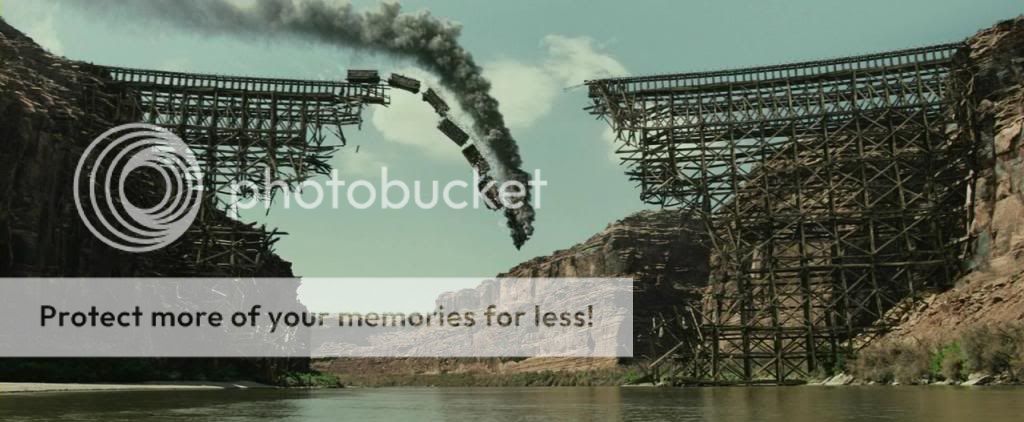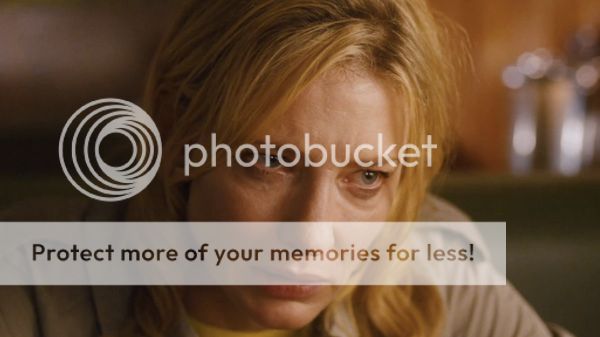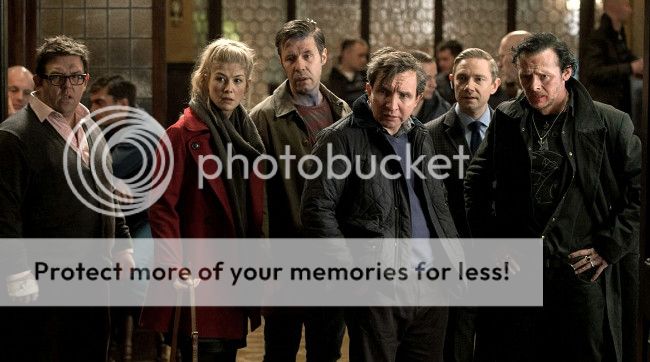10 Reason Why THE LONE RANGER is My Favourite Film of 2013
10. Most of it was shot on film

I’ll always be an advocate of film. It worked and looked beautifully throughout the past 128 years, and it continues to look terrific even today. Digital photography and cinematography, although often quoted as looking “too sharp”, still has a level of overall softness that film generally doesn’t (unless shots are out of focus). The silver nitrate that gives off that wonderful film grain contains all of the quality in the sharpness of the final product, and can never be emulated. Not even with million dollar budgeted post-production. I’m not knocking digital cinematography. It’s just that if I can, I will always work with film in the future.
Also, I’m not saying that films that are shot on film are better because they were shot on film. No, that would be egotistic, elitist, and utterly snobbish. I’m simply saying that I prefer the look of film, so if a certain film was shot on film, then it’d be an added bonus. Boy, I sure wrote the word “film” bunch of times, there…
09. The cast is entirely excellent

I can’t say that any of the film’s actors deliver bad performances. They’re all, at least, good. They all take the material seriously (because the film is much more of a drama than it is a comedy) and the principal cast is excellent. And good performances help to elevate even crummy material. Luckily, there isn’t any crummy material to be found here.
08. William Fichtner and Tom Wilkinson are great bad guys

I sincerely hope those that those who are reading this post don’t treat it as a film critique, but rather a person’s overall opinion as to why this is a really good film. That being said, you should know by now that Fichtner and Wilkinson’s characters (in the film) are brothers, and are also “the bad guys”. Fichtner plays it a little over the top, in terms of body movement and language, but also delivers a creepy, evil character. And being a cannibal is only a small part of it. You simply don’t want to anger this man because he’s truly frightening and tends to kill on very little grounds. But his performance is solid, easily the best in the film.
Wilkinson plays his character straight, not hiding any secrets and as a result, no one realizes that he’s hiding any secrets. But his character is purely evil. He’s a mass murderer and he doesn’t bat an eye. Everything thing that he does he does in the name of greed, and he doesn’t care about a single other living soul. Both his and Fichtner’s performances are excellent and are beneficial in elevating the final product from good to great.
07. ILM strikes gold, as usual

ILM was always working hard and working since the 1970s. The STAR WARS and STAR TREK films are only a small part of their overall greatness. But in The Lone Ranger, they infuse terrific CGI effects with practical ones and make them seem, for the most part seamless. They worked their magic in Verbinski’s Pirates of the Caribbean trilogy and they worked it really well here, too.
06. Army Hammer is great as John Reid/The Lone Ranger

Hammer plays District Attorney John Reid as a naïve pacifist, but is terrifically convincing at that. As an actor he’s tall and awkward, and the character makes lots of mistakes (like hunting for outlaws without carrying a gun)… and come to think of it he reminds me a lot of James Stewart in Destry Rides Again (1939). He, too was very tall and awkward, and played a pacifist gunslinger who believed that he could uphold the law to the full extend without firing a single shot.
I guarantee that Destry was a huge inspiration to Hammer’s version of John Reid, in both the writing and acting processes. And I can guarantee that Hammer knows of Stewart’s Destry. That’s why he’s terrific in this film
05. Hans Zimmer's score is magnificent

Hans Zimmer is a force to be reckoned with. He’d become terrifically popular these past few years due to his collaborations with Christopher Nolan (Batman Trilogy, Inception) and Verbinski’s Pirates Trilogy, but he’s also been around since the mid 1980s. Long story short, The Lone Ranger soundtrack is magnificent. Aspects from Once Upon a Time in the West are thrust into two of the songs in this soundtrack, and this is a great feeling, great sounding soundtrack. Even non-Western fans would love it. It’s touching, beautiful, often powerful, and always reminds you that you’re listening to music from a Western. I love it.
04. Tonto isn't a sidekick

Aside from knowing that Tonto is, supposedly, Reid’s sidekick, I didn’t know anything about John Reid or Tonto prior to watching this film, and I still don’t. However, I love the idea that Tonto isn’t Reid’s sidekick throughout this film; he isn’t like Kato from The Green Hornet or Robin from Batman.
When he’s first introduced to the audience he’s a man on a revenge mission, and that doesn’t change until his mission is complete at the end of the film. The fact that he meets up with Reid and they buddy up is always seen a hindrance to him. Also, he’s the one telling the story. The entire film is told through Tonto’s deluded point of view. Whatever he says goes, so he’s the boss. He’s nobody’s monkey, and he doesn’t even like Reid. He assists him simply because he believes that the Great Spirits had told him to do so, and also because they both seek revenge against the same men. Strength in numbers.
Plus, the rendition of the character background and his traumatic childhood is achingly painful to watch, showcasing a broken adult male who will only be satisfied by spilling the blood of others. He’s no hero, but he is an anti-hero that one can empathize with.
03. To a certain degree, this is ONCE UPON A TIME IN THE WEST

The Lone Ranger shares a theme, a character, and some music with Leone’s OUATITW. It’s impossible to miss the fact that Tonto and Harmonica (played by Charles Bronson in OUATITW) are almost identical, down to the notion that they each carry a totem until their final meet with the film’s “bad guy”. Then again, Harmonica is a Mexican and carries a harmonica, and Tonto is Comanche and carries a fake silver watch… but you get the point.
There’s also the similar plot in which a railroad baron murders lots of people in order to make lots of money because he’s an evil, greedy man. Which brings me to…
02. The theme of "progress"

Trains equal money. Back in the day, those who owned land underneath railroad tracks made tons of cash whenever the trains had passed on their land; just like landing on someone else’s territory in a game of Monopoly. In real life it wasn’t that simple, but that was the gist in OUATITW and in The Lone Ranger.
Tom Wilkinson’s Latham Cole was willing to stage a war with Comanche tribes in order to wipe them all out, just so that he could run his trains over their territory without having to ask for their permission. And he did it all in the name of “progress”. Those trains carried silver, tons and tons of silver, making him almost a billionaire and he owned both the silver and the railroads. If wiping out an entire nation of people just so that he could get rich is a form of “progress”, then that’s truly an evil man.
Trains, silver, and The American Dream. All a big part of Latham Cole’s definition of “progress”. I still can’t fathom why people dislike this film when it has such a fascinating outlook onto “the future”.
And lastly:
01. It's the best shot film of 2013

It’s difficult to explain why the cinematography is exemplary without simply showing a clip or two, but I’ll do my best. Gore Verbinski shoots the film with lots of dolly tracks and dolly shots, as in opposed to handheld, shaky-camera shots. Aside from that, each shot is composed to look utterly beautiful, much like in his previous small masterpiece Rango (2011). But besides looking beautiful, each shot cohesively joins the next shot and the film showcases a terrific sense of three-dimensional space and time.
Film is a two-dimensional medium and it’s up to the DP (Director of Photography) and the director to simulate a 3D space. Verbinski does that in spades. During his numerous, terrific action sequences, and also during the talky parts, audiences understand what is happening within each and every shot on their own. But each following shot is derived from the previous one in a manner seeming to have come from shot-by-shot story-boarding. As an example ,when an action sequence takes place inside, on top, and around a train the audience is always aware of what is happening, to whom it is happening, and from where and why because of the 3D space that is proficiently showcased through a montage-style of editing that takes every single shot into consideration. Whole scenes are concocted that way.
You also have small, single serving shots like the one that showcases Helena Bonham Carter’s character, Red Harrington (a fitting name), sitting on a small couch and displaying her ivory leg. Just after she “wishes that the man who took her leg be brought to justice”, the camera pans up slightly to reveal a painting on the wall behind her. The painting shows a red haired ballerina standing en pointe, and who’s similar in likeness to Red. It’s a nice little touch and the film is filled with those.
I absolutely love this film. It has problems and is far from perfect, and there are more than ten reasons as to why this is my favorite film of 2013. But these ten reasons should suffice, and I hope that the film garners a larger audience because it’s definitely not the “horrid mess” that critics seemed to spout. Maybe I really do see in it more than the average person does, and maybe that’s for the best.











































